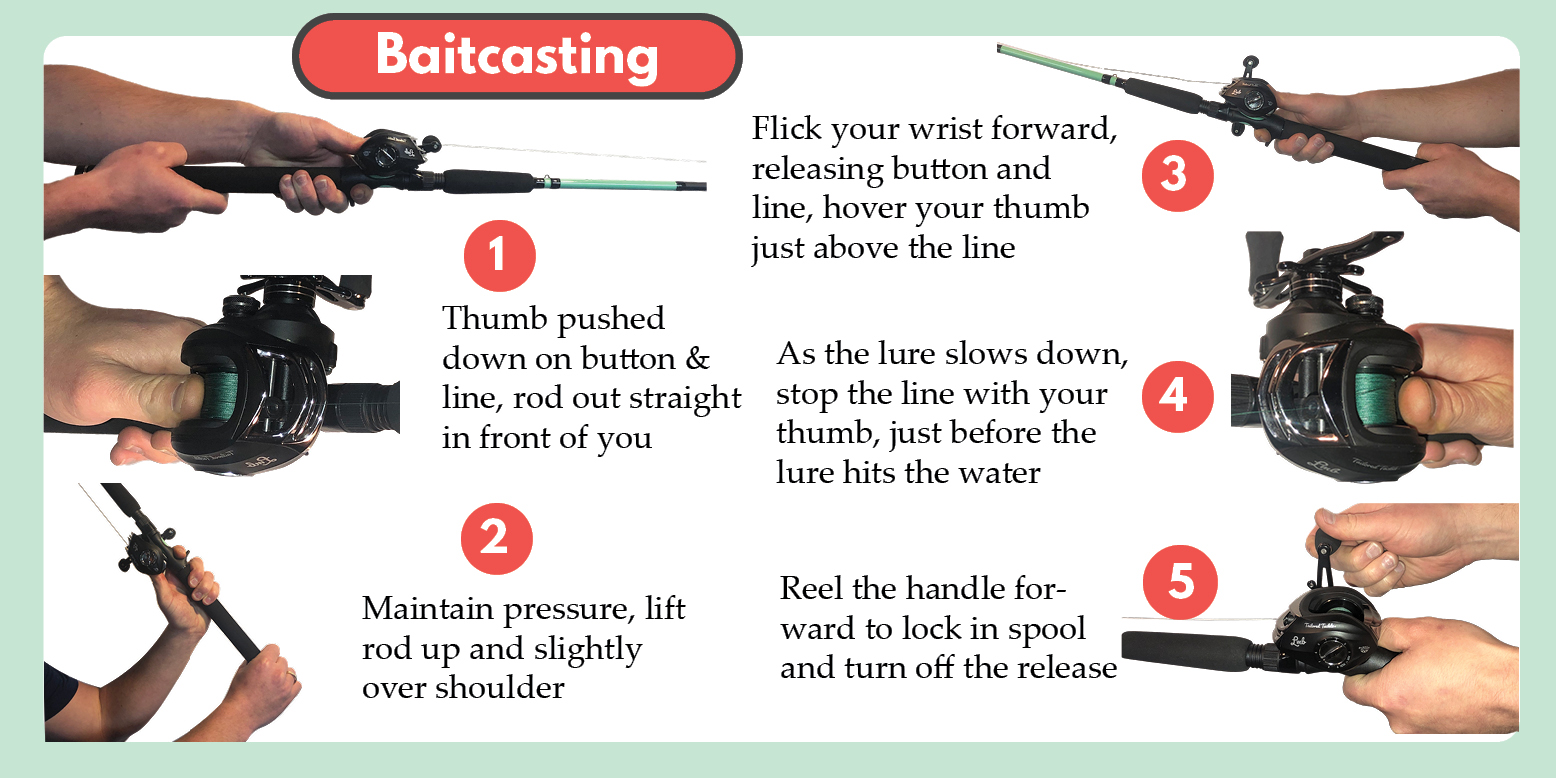Fishing can be a fun and relaxing hobby. Many people enjoy it. There are many tools used in fishing. One important tool is the reel. There are different types of reels. One type is the baitcasting reel. This article will explain when to use a baitcasting reel.

Credit: tailoredtackle.com
What is a Baitcasting Reel?
A baitcasting reel is a type of fishing reel. It sits on top of the fishing rod. The spool rotates as you cast. This reel needs some practice to use well. But, it offers good control and power.
When to Use a Baitcasting Reel?
There are certain times when a baitcasting reel is best. Let’s look at those times.
1. Casting Heavy Lures
Baitcasting reels are great for heavy lures. They handle the weight well. This makes them good for big fish. Heavy lures need strong reels. Baitcasting reels are strong. They help you cast far and with control.
2. Fishing In Thick Cover
Some fish hide in thick cover. This can be weeds or logs. Baitcasting reels are good for these spots. They help you pull fish out. The strong drag system is helpful. You can fight fish without breaking the line.
3. Using Large Lines
Baitcasting reels are good for large lines. They hold more line. This is useful for deep water. You can fish deeper. Large lines are strong. They do not break easily. This is good for big fish.
4. When Accuracy Is Important
Sometimes, you need to cast with accuracy. Baitcasting reels are good for this. They give you control. You can place your lure where you want. This is important for catching fish.
Pros of Baitcasting Reels
Baitcasting reels have many advantages. Let’s look at some of them.
1. Strong Drag System
The drag system is strong. This helps you fight big fish. You can adjust it easily. This gives you control.
2. Good For Heavy Lures
These reels handle heavy lures well. They cast far. This is good for big fish. You can use large lures without problems.
3. Accurate Casting
You can cast with accuracy. This helps in catching fish. You can place your lure where you want. This is very useful.
Cons of Baitcasting Reels
Baitcasting reels also have some disadvantages. Let’s look at them.
1. Hard To Learn
These reels need practice. They are not easy to use. Beginners may find them hard. But, with time, you can learn.
2. Backlash Problems
Backlash can happen. This is when the spool spins too fast. The line gets tangled. This can be frustrating. You need to learn to avoid this.
3. Expensive
Baitcasting reels can be costly. They are more expensive than other reels. But, they are good quality. They last a long time.
How to Use a Baitcasting Reel
Using a baitcasting reel takes practice. Here are some tips to help you.
1. Adjust The Brakes
Brakes help control the spool. Adjust them to avoid backlash. Start with a high setting. Lower it as you get better.
2. Set The Drag
The drag is important. Set it based on the fish you want. A good drag helps you fight fish. It stops the line from breaking.
3. Practice Casting
Practice makes perfect. Cast in an open area. Try different lures. Learn to control the spool. This will help you avoid backlash.
4. Thumb Control
Use your thumb to control the spool. This helps you stop it. It avoids backlash. Practice this skill. It is very useful.
Frequently Asked Questions
What Is A Baitcasting Reel?
A baitcasting reel is a fishing reel mounted on top of the rod.
Why Use A Baitcasting Reel?
Use for casting heavier lures. Offers better control and accuracy.
When Is A Baitcasting Reel Best?
Best for targeting larger fish. Great in freshwater and saltwater.
How To Avoid Backlash With A Baitcasting Reel?
Adjust the spool tension. Practice thumb control. Use heavier lures.
Conclusion
Baitcasting reels are useful tools. They are good for heavy lures, thick cover, and large lines. They offer accuracy and control. But, they need practice. They can be hard to learn. With time, you can master them. Happy fishing!




